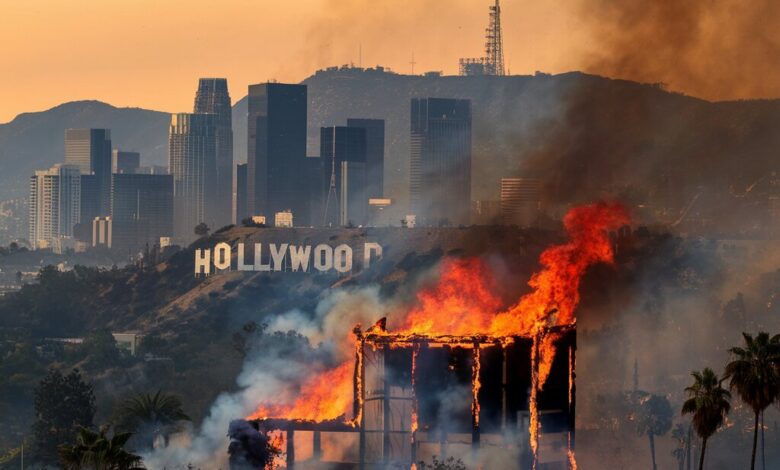USA in Fire: Analyzing the January 2025 Los Angeles Wildfires

The January 2025 wildfires in Los Angeles have captured global attention, symbolizing the escalating climate challenges and their profound impact on urban centers. Dubbed by many as “USA in Fire,” these devastating events ravaged large parts of Southern California, leaving a trail of destruction, displacement, and controversy in their wake. This article delves into the areas affected, the human and environmental costs, and the broader implications for the region’s future.
Areas Affected
The wildfires primarily affected:
- Palisades Highlands: A residential area where fires destroyed over 200 homes.
- Angeles National Forest: Significant portions were scorched, threatening biodiversity.
- Santa Monica Mountains: Flames rapidly consumed dry brush, forcing evacuations in adjacent neighborhoods.
- Beverly Hills and Bel-Air: Exclusive neighborhoods where luxury homes were reduced to ashes, with several high-profile residents impacted.
The fires, driven by Santa Ana winds exceeding 50 mph, consumed over 250,000 acres. These winds carried embers over significant distances, sparking new blazes and challenging containment efforts. “USA in Fire” has become a rallying cry for addressing these escalating climate disasters.
Casualties and Human Cost
The wildfires claimed 59 lives, including residents, firefighters, and relief workers. Among the notable figures lost were:
- Film Producer Jonathan Reed: Known for blockbuster hits, he perished in his Bel-Air mansion.
- Activist Laura Mitchell: A vocal environmental advocate, she tragically died while evacuating her home in Malibu.
Several other celebrities, including Paris Hilton and Elon Musk, reported significant property losses but escaped unharmed. Thousands of residents were displaced, with many taking refuge in emergency shelters across Los Angeles County. “USA in Fire” remains a stark reminder of the human cost of such disasters.
Environmental and Economic Damage
The wildfires caused an estimated $10 billion in damages, including destroyed infrastructure, lost homes, and firefighting expenses. Beyond the economic toll, the environmental impact was severe:
- Air Quality: Thick smoke blanketed the region, causing health risks and grounding flights.
- Wildlife: Thousands of animals perished, and critical habitats were destroyed, threatening endangered species.
“USA in Fire” highlights the urgent need for environmental resilience and sustainable practices to minimize future risks.
Controversies and Public Response
- Political Accountability: Mayor Karen Bass faced criticism for attending an overseas event during the crisis, leaving Fire Chief Kristin Crowley to manage operations amid reduced departmental budgets. These budget cuts were highlighted as a major factor in the firefighting agencies’ limited capacity to respond effectively.
- Social Media Insensitivity: Kylie Jenner’s promotion of a luxury product featuring a roaring fireplace during the crisis sparked outrage, seen as tone-deaf in the context of the unfolding tragedy. “USA in Fire” was amplified on social media, drawing attention to these missteps.
- Celebrity Actions: While some public figures faced backlash, others, like Meghan Markle and Prince Harry, received praise for actively participating in relief efforts, and distributing food and supplies to affected residents.
Lessons Learned and Moving Forward
The January 2025 wildfires underscore the urgent need for:
- Enhanced Preparedness: Increased investment in firefighting resources and infrastructure.
- Sustainable Urban Planning: Policies to reduce urban sprawl and protect green spaces.
- Community Awareness: Education on fire safety and evacuation protocols.
As Los Angeles begins its recovery, the “USA in Fire” serves as a sobering reminder of the challenges posed by climate change and the collective action required to mitigate its impact.


